Does H2O React with NO2 to Form HNO3?
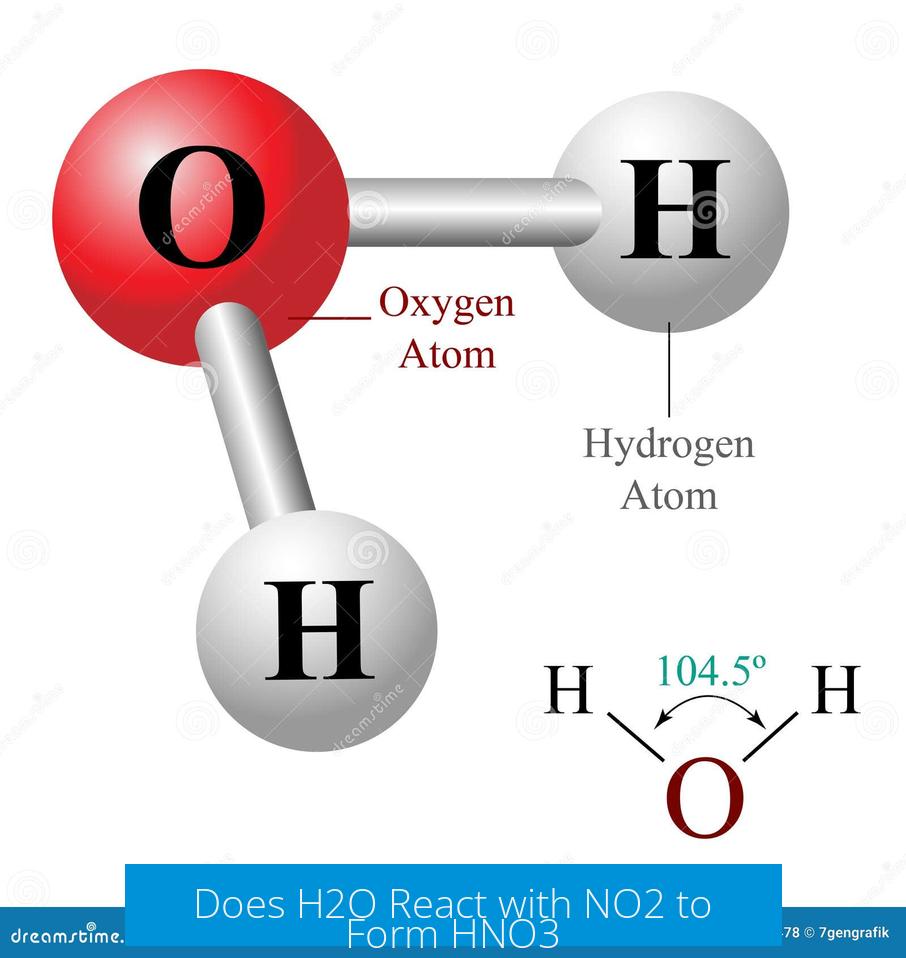
The reaction of nitrogen dioxide (NO2) with water (H2O) does not produce nitric acid (HNO3) directly in a simple, single step. Instead, this reaction yields a mixture of nitric acid (HNO3) and nitrous acid (HNO2) through a redox process involving disproportionation of NO2. The complete and balanced chemical equation for the aqueous reaction is:
2 NO2 + H2O → HNO3 + HNO2
This shows that both nitric acid and nitrous acid form simultaneously rather than exclusively nitric acid. Further reactions can convert nitrous acid to nitric acid, but the primary reaction with water yields both acids.
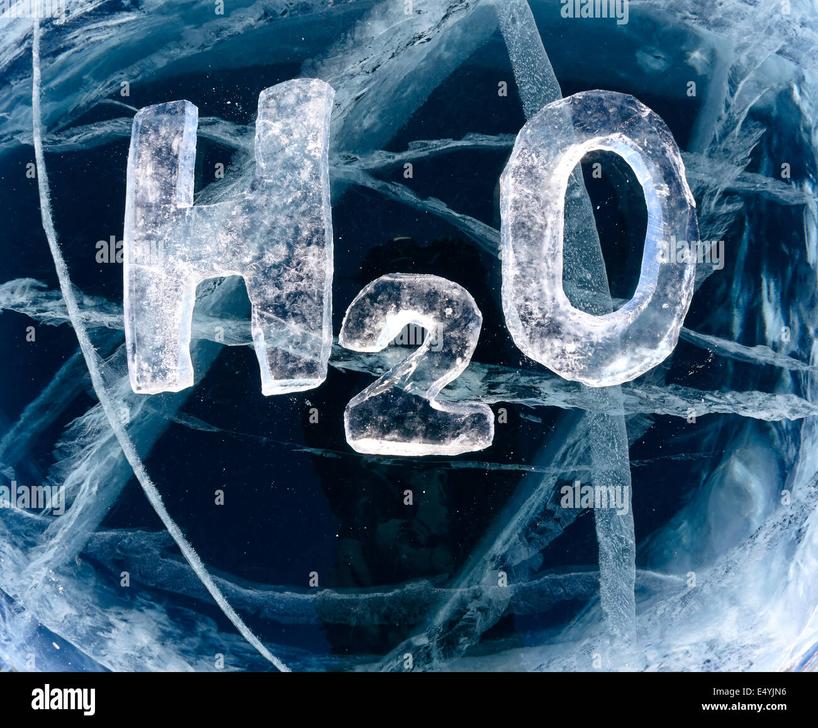
Understanding the Reaction Between NO2 and H2O
Nitrogen Dioxide and Water: The Reactants
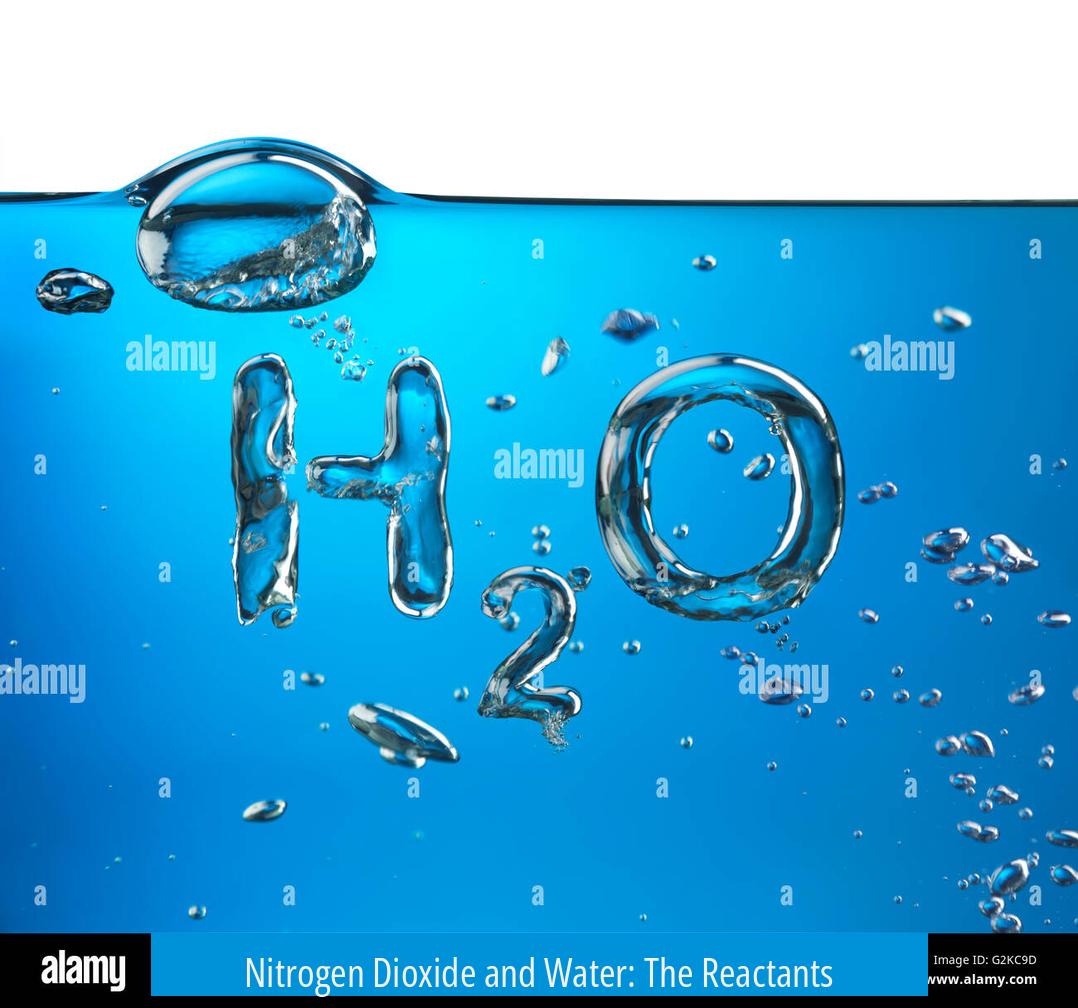
- Nitrogen Dioxide (NO2): A reddish-brown gas with a pungent odor, NO2 is an oxide of nitrogen with nitrogen in the +4 oxidation state. It acts as both an oxidizing and reducing agent.
- Water (H2O): Commonly called oxidane, water is a neutral molecule that participates as a solvent and reactant.
When NO2 interacts with liquid water, the molecules engage in an oxidation-reduction balance due to the unique electronic structure of NO2.
Disproportionation Reaction

The term disproportionation refers to a redox reaction in which the same species is both oxidized and reduced. In the NO2 and H2O reaction, nitrogen in NO2 does both:
- Part of NO2 oxidizes to nitrogen in +5 state (in nitric acid, HNO3).
- Part of NO2 reduces to nitrogen in +3 state (in nitrous acid, HNO2).
This internal electron transfer creates both acids rather than only nitric acid, differentiating it from a simple synthesis reaction.
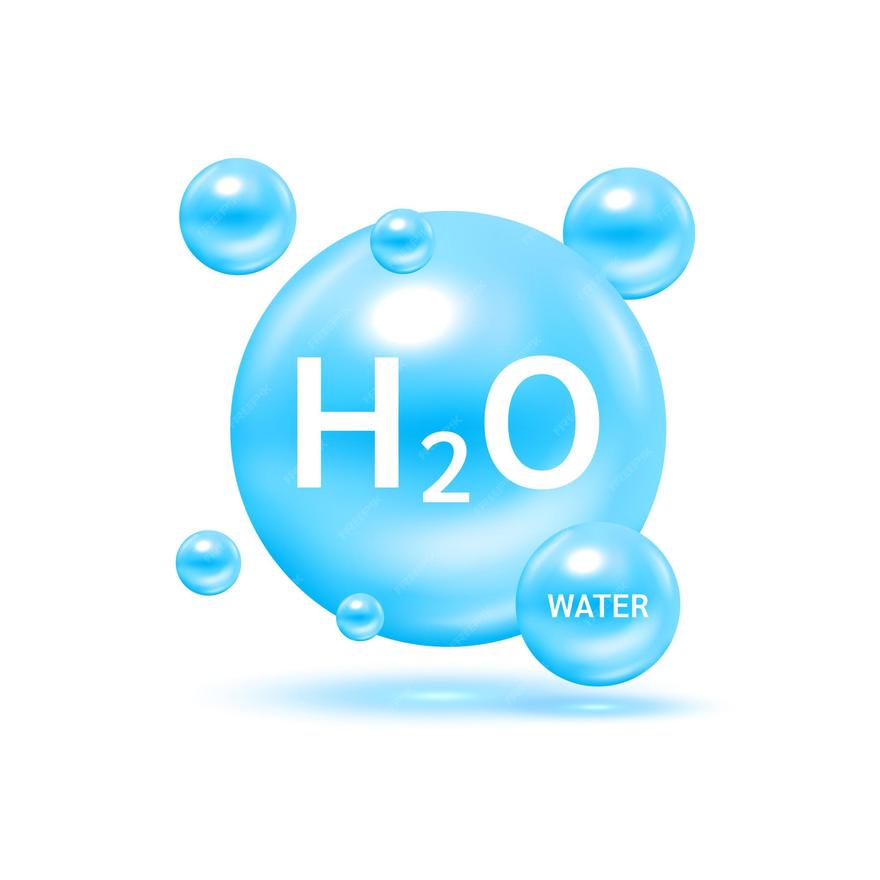
Chemical Equations and Stoichiometry
Unbalanced and Balanced Equations
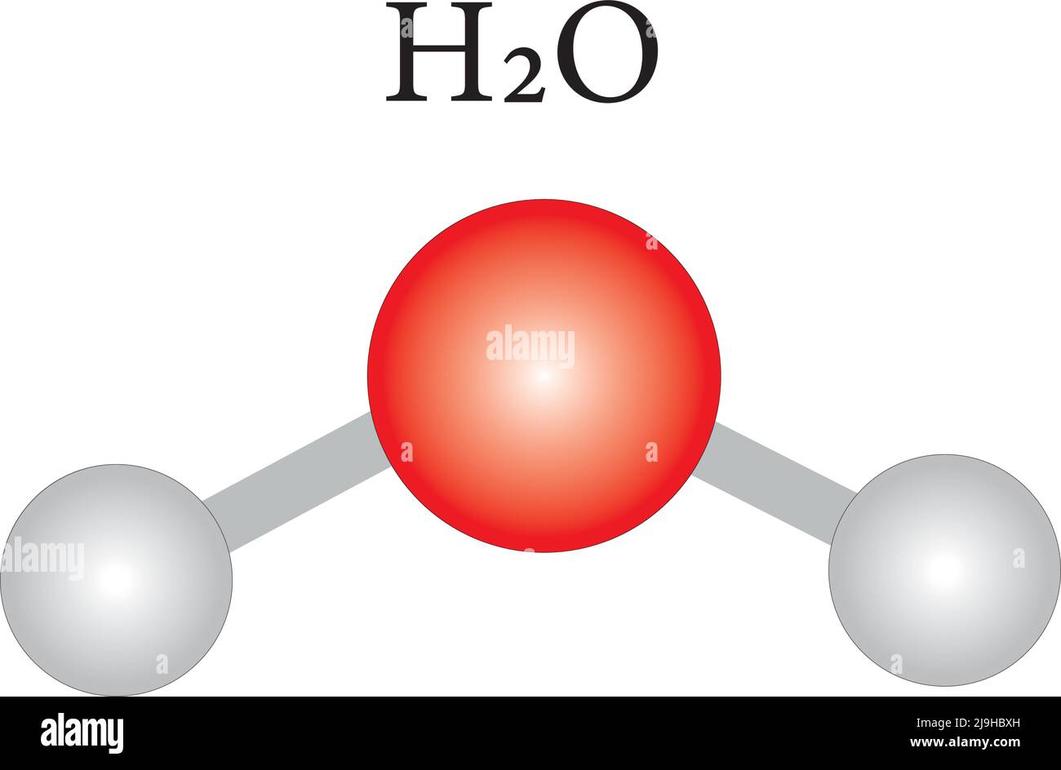
The simplified but incomplete form often quoted as:
H2O + NO2 → HNO3 + NO (unbalanced)
does not capture the true stoichiometry nor the intermediate nitrous acid product. The balanced and more accurate equation is:
| Reactants | Products |
|---|---|
| 2 NO2 + H2O | HNO3 + HNO2 |
Here, two nitrogen dioxide molecules react with one water molecule, producing one molecule each of nitric acid and nitrous acid.
Further Reactions
In the presence of oxidizing agents or over time, nitrous acid (HNO2) may decompose or oxidize to form additional nitric acid (HNO3) and nitrogen oxides. However, such processes require specific conditions and are often catalyzed.
Relation to Nitrogen Pentoxide (N2O5) and Tertiary Acid Formation
Nitrogen pentoxide (N2O5), the anhydride of nitric acid, directly forms nitric acid when reacted with water:
N2O5 + H2O → 2 HNO3
This reaction proceeds cleanly, forming what is classified as a tertiary acid—the acid derived from a non-metal oxide reacting with water.
In contrast, NO2 is not the anhydride of nitric acid but an intermediate nitrogen oxide. Reactions starting with N2O5 provide a straightforward route to pure nitric acid. Reaction of water with NO2 is partial and complex due to redox behavior.
Reaction Mechanism and Oxidation States
NO2 involves nitrogen in the +4 oxidation state (NIV). In the reaction with water:
- One NO2 species loses an electron (oxidation) to form nitrogen in +5 state in nitric acid (NV).
- Another NO2 gains an electron (reduction) to nitrogen in +3 state in nitrous acid (NIII).
This electron shift between nitrogen dioxide molecules explains the simultaneous formation of both HNO3 and HNO2, making the reaction a typical redox disproportionation.
Properties of the Relevant Chemicals
| Chemical | Description | Appearance |
|---|---|---|
| NO2 (Nitrogen dioxide) | Brown gas or yellowish-brown liquid. Acts as oxidizer and reducer. | Reddish-brown gas; pungent odor. |
| H2O (Water) | Universal solvent; oxidane. | Colorless liquid. |
| HNO3 (Nitric acid) | Tertiary acid formed by N2O5 + H2O and a product of NO2 + H2O reaction. | Colorless to yellow or red fuming liquid with acrid odor. |
| HNO2 (Nitrous acid) | Intermediate acid formed with HNO3 from NO2 and H2O. | Usually unstable; aqueous solution. |
Summary of the Reaction Dynamics
The reaction involving nitrogen dioxide gas and water is complex. Direct chemical interaction yields both nitric acid and nitrous acid, not exclusively nitric acid. The balanced redox reaction is:
2 NO2 + H2O → HNO3 + HNO2
NO2 serves as both oxidizing and reducing agent through disproportionation. Nitric acid can be formed in pure form more efficiently by reacting water with nitrogen pentoxide (N2O5), which is the anhydride of nitric acid.
Key Takeaways
- The simple equation H2O + NO2 = HNO3 is incomplete; nitrous acid also forms.
- Actual balanced reaction: 2 NO2 + H2O → HNO3 + HNO2.
- Reaction is a redox disproportionation, with NO2 acting as both oxidizer and reducer.
- Nitrogen pentoxide (N2O5) reacts cleanly with water to yield nitric acid.
- Nitric acid is a tertiary acid formed from a non-metal oxide and water.
- Further reactions can convert nitrous acid to nitric acid but require additional steps or conditions.
Is H2O + NO2 = HNO3? Let’s Dive Into the Chemistry
H2O + NO2 does not directly equal HNO3 on its own; the reaction is more complex and incomplete if written like that. When water (H2O) meets nitrogen dioxide (NO2), the reaction produces both nitric acid (HNO3) and nitrous acid (HNO2). The full and balanced equation is:
2 NO2 + H2O → HNO3 + HNO2
So, if you thought it was as simple as one molecule of water plus one molecule of nitrogen dioxide creating nitric acid alone, you’re partially right—but there’s more to this chemical dance.
Breaking Down the Reaction: What’s Really Happening Here?
At first glance, nitrogen dioxide (NO2) looks like a troublemaker: a brownish gas with a pungent, acrid odor that many find quite unpleasant. It’s also known by other names, such as nitrogen(IV) oxide or nitrogen peroxide. Above 70°F, NO2 exists as a reddish-brown gas, but when cooled below 15°F, it pairs up to form dinitrogen tetroxide (N2O4), a different beast structurally.
When NO2 meets water, chemistry gets interesting. The molecules undergo disproportionation, a fancy term meaning NO2 acts as both an oxidizing and reducing agent simultaneously.
Think of it as a chemical tug of war—the same player pulling in two directions.
Disproportionation (Dismutation): The Key to the Reaction
In this reaction, NO2 splits its fate:
- Some molecules are oxidized to create nitric acid (HNO3), a powerful tertiary acid.
- Others are reduced to form nitrous acid (HNO2), a less stable, weaker acid.
This process happens because the nitrogen in NO2 holds an intermediate oxidation state (IV). Upon reacting with water, part of it “loses” an electron to become nitrogen in nitric acid (+V), while part “gains” an electron, becoming nitrogen in nitrous acid (+III).
In technical lingo:
- NO2 (NIV) – e– → HNO3 (NV)
- NO2 (NIV) + e– → HNO2 (NIII)
This results in two different acids forming simultaneously.
Why Not Just Start with N2O5 to Get HNO3?
Another route to produce nitric acid is starting with nitrogen pentoxide (N2O5), a non-metal oxide. When N2O5 blends with water, it forms nitric acid smoothly and cleanly.
This is a classic tertiary acid formation—where a non-metal oxide reacts with water to produce an acid. The initial reaction creates H2N2O6 (a dimeric intermediate), but chemists simplify this to its minimal formula: HNO3.
To visualize:
N2O5 + H2O → 2 HNO3
This is sometimes easier for industrial processes where you want pure nitric acid production without additional by-products like nitrous acid.
What Makes This Reaction Important?
Nitric acid is a big deal in chemistry and industry. Also called aqua fortis or spirit of niter, it’s widely used to make fertilizers, explosives, and dyes. Its properties as a strong acid and oxidizer are indispensable.
Understanding the pathway from NO2 and H2O to nitric acid and nitrous acid helps in fields like atmospheric chemistry, where nitrogen dioxide plays a role in pollution and acid rain formation.
Let’s Get Practical: Example From Atmospheric Chemistry
In the atmosphere, nitrogen dioxide is a common pollutant from combustion engines and power plants. When it dissolves in rainwater, it reacts with H2O to form a mixture of nitric and nitrous acids.
This mixture falls as acid rain, damaging forests, aquatic life, and even buildings. It’s a real-world example of how this chemical reaction directly impacts our environment.
So, next time acid rain hits, you’ll know there’s a whole chemistry drama behind those droplets!
What About the Balanced Equation You Should Remember?
| Reactants | Products |
|---|---|
| 2 NO2 + H2O | HNO3 + HNO2 |
This is the neat balance, showing two molecules of nitrogen dioxide reacting with one molecule of water, producing nitric acid and nitrous acid together.
Recap: What You Need to Know
- H2O + NO2 → HNO3 alone? No, not directly. The reaction is incomplete without considering nitrous acid formation.
- Complete reaction: 2 NO2 + H2O → HNO3 + HNO2
- NO2 is both oxidized and reduced, making this a redox reaction called disproportionation.
- N2O5 + H2O → 2 HNO3 is a cleaner route to nitric acid.
- Nitric acid (HNO3) is important industrially and environmentally.
Curious Where Else This Chemistry Shows Up?
Understanding this reaction isn’t just textbook trivia. It highlights pollution control challenges, acid rain chemistry, and industrial synthesis of valuable chemicals. Whether you’re a student, researcher, or just science-curious, appreciating these interactions sharpens your grasp of everyday chemistry.
And hey, if you ever smell that sour, pungent air near a busy highway, you’re likely smelling some NO2 doing its mischievous thing—some of it eventually turning into tiny acid droplets thanks to a splash of water up there in the clouds.
Final Thought: Chemistry Never Sleeps
We might write equations neatly on paper, but reactions like H2O + NO2 remind us that nature loves complexity. So next time you see a chemical symbol puzzle, remember this: one plus one doesn’t always equal two—sometimes it equals a couple of fascinating acids and a heap of chemical intrigue.
What products form when NO2 reacts with H2O?
The reaction produces nitric acid (HNO3) and nitrous acid (HNO2). The balanced equation is 2 NO2 + H2O → HNO2 + HNO3. This means one molecule of water reacts with two molecules of nitrogen dioxide to form these acids.
Is the reaction between NO2 and H2O a simple acid formation?
No, it involves a redox process. Nitrogen dioxide acts both as an oxidizing and a reducing agent. This leads to disproportionation, meaning NO2 converts into two different nitrogen compounds.
Why is the reaction equation H2O + NO2 = HNO3 considered incomplete?
The single-step equation doesn’t show all products. Nitric oxide (NO) also forms during the reaction. The full unbalanced reaction is H2O + NO2 → HNO3 + NO, highlighting the complexity of the process.
How is the formula for nitric acid derived from nitrogen oxides?
Nitric acid is often written as HNO3, a simplified form. It originates from N2O5 reacting with water forming H2N2O6, which simplifies due to its ionic nature into the minimal formula, HNO3.
What forms of NO2 are involved in the reaction with water?
In the gas phase, NO2 appears as reddish-brown gas. At lower temperatures, it forms a dimer called N2O4. Both forms relate to how NO2 participates in the reaction with water to generate acids.


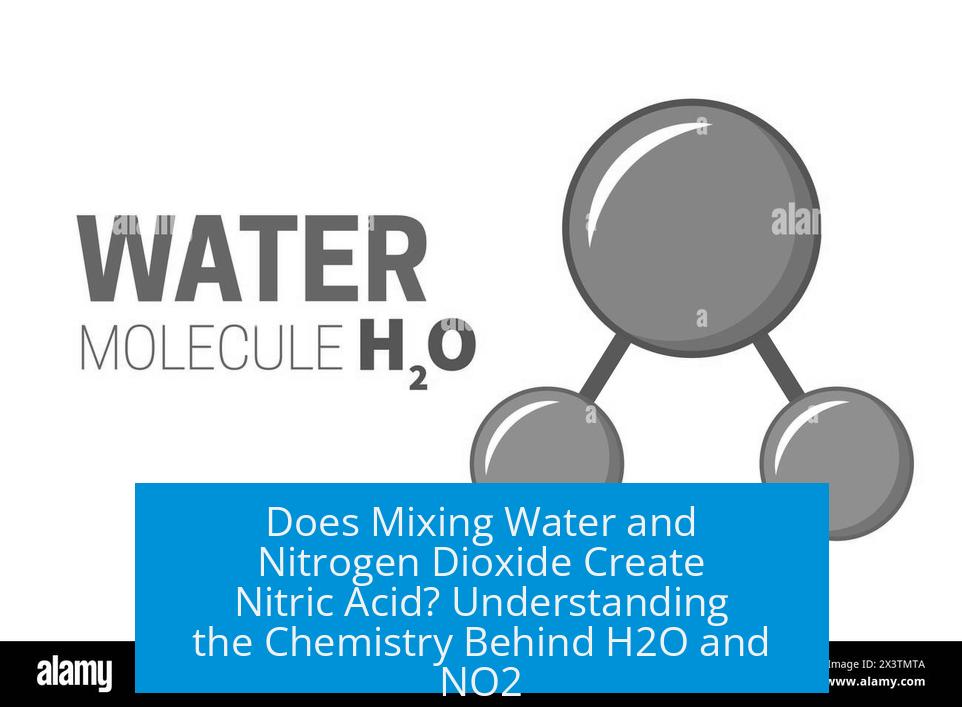


Leave a Comment